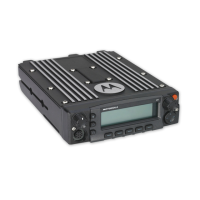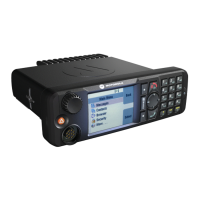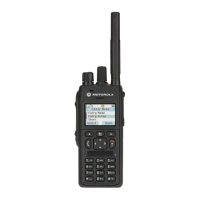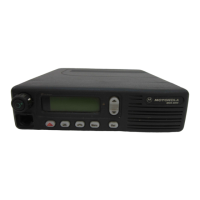
Do you have a question about the Motorola MOTOTRBO CM300d and is the answer not in the manual?
| Display | Numeric |
|---|---|
| Digital Protocol | DMR |
| Operating Temperature | -30°C to +60°C |
| GPS | No |
| IP Rating | IP54 |
| Frequency Range | VHF (136-174 MHz); UHF (403-470 MHz) |
| Dimensions | 44 x 169 x 134 mm |
| Weight | 1.3 kg |
| Channel Capacity | 16 channels |
| Digital/Analog | Digital and Analog |
Details supported features by radio software version and how to check it.
Explains how to use the user guide and what icons represent.
Lists topics to discuss with dealer/system administrator.
Instructions on how to turn the radio on and off.
Instructions on how to increase and decrease the radio volume.
Identifies and labels the main physical controls of the radio.
Explains how programmable buttons are assigned and function.
Lists and describes functions that can be assigned to buttons.
Lists and describes settings or utility functions that can be assigned.
Explains how to access programmed functions via buttons or menu.
Describes the purpose and operation of the Push-To-Talk button.
Explains how to switch between analog and digital modes.
Explains icons appearing on the radio's display status bar.
Describes icons shown on the display during a call.
Explains icons that appear momentarily after an action.
Explains the operational status indicated by the radio's LEDs.
Describes audible alerts for radio status or data reception.
Describes different indicator tones.
Explains how to select a zone, which is a group of channels.
Explains how to select a channel for transmission or reception.
Details how to receive and respond to calls.
Details how to receive and respond to group calls.
Details how to receive and respond to private calls.
Explains how to receive all-call announcements.
Details how to receive and respond to selective calls.
Explains how to initiate various types of radio calls.
Explains how to make group calls.
Explains how to make private calls.
Explains how to make all-call transmissions.
Explains how to make selective calls.
Explains direct radio-to-radio communication without a repeater.
Explains how to continuously monitor a selected channel for activity.
Explains how scan lists are created, assigned, and edited.
Explains how to start, stop, and use the scan feature.
Explains vote scan for wide area coverage.
Explains contact list capabilities and entry details.
Explains how to activate/deactivate call ringers for alerts.
Explains how the radio tracks and manages recent calls.
Explains how to use call alerts to contact users.
Explains how to signal critical situations and initiate emergency alarms.
Explains how to send preprogrammed status messages to a dispatcher.
Explains how privacy feature prevents eavesdropping.
Explains analog-only feature to prevent eavesdropping.
Explains the list that collects unread events like calls and alerts.
Explains the analog-only feature to inform about out-of-range status.
Explains how to enable/disable radio tones and alerts.
Steps to add a new entry to an existing scan list.
Steps to remove an entry from a scan list.
Explains how to use the alphanumeric keypad for entering data.
How to enable or disable audible tones for keypad presses.
Lists additional advanced features available with keypad mics.
How to select a zone by searching for its alias.
How to make a private call by manually dialing a subscriber ID.
How to make calls using programmable number keys.
How to make calls by searching for contact aliases.
How to view scan list entries using alias search.
Steps to edit scan list entries using alias search.
Steps to delete an entry from a scan list using alias search.
How to set and edit priority for scan list entries using alias search.
How to save an alias or ID from the call list to contacts.
How to send a call alert by manually dialing a subscriber ID.
How to view the radio's Received Signal Strength Indicator values.
Explains the DTMF feature for interfacing with telephone systems.
Explains how to use password lock to access the radio.
Steps to access the radio using a password upon powering up.
How to unlock the radio after it has been locked due to incorrect password attempts.
How to enable or disable the password lock feature.
Steps to change the radio's password.
Explains how to customize certain feature parameters.
Steps to enter the Front Panel Configuration (FPC) mode.
Explains how to navigate and modify FPC parameters.
Lists compatible antennas for the radio.
Lists compatible audio accessories.
Lists compatible cables for the radio.
Lists compatible mounting kits for the radio.
Lists other miscellaneous compatible accessories.
Explains assignments for special maritime channels like Emergency.
Details FCC requirements for shipboard radio operation.











